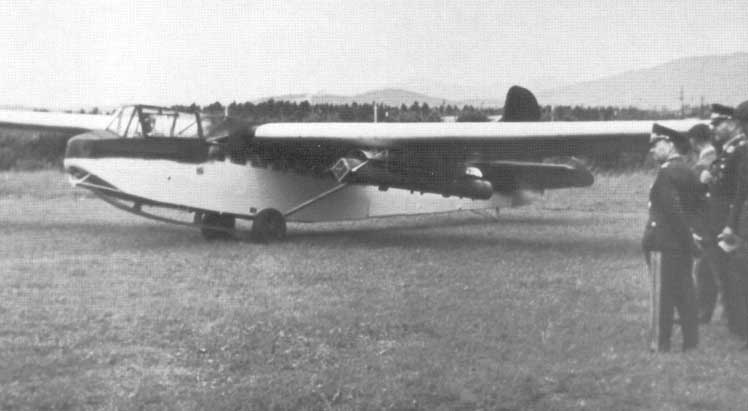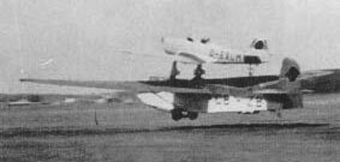

|
After defeat in World War One, Germany had been restricted developing powered aircraft by the Versailles Treaty. This led to great interest in gliders and sailplanes as a means of introducing young Germans to aviation and technical resources were directed to both design and operational aspects of gliding. The concept of military applications for gliders was championed by Ernst Udet who had some experience with the well-developed Soviet combat glider programme. This interest eventually led to an order for Deutsche Forschungsantalt Fuer Segelflug (DFS) to develop an " Assault Glider". Hans Jacob designed the glider, which was a high-winged monoplanes with a steel-tube framed and fabric covered fuselage and stressed plywood wing, jettisonable wheels were used for take-off and a centrally mounted skid for landing, dive brakes were fitted into the upper wing surface. The design load was one pilot and nine troops, with the troop seats removable to create cargo space, designated DFS 230 it was first flown in early 1937 by Hanna Reitschand. After the successful flight trials, the type was ordered into production as the DFS 230A-1, which was widely used, in particular for the attack on the Belgian forts at Eban Emael in May 1940; the aerial invasion of Crete in 1941; and as a transport during the North African and Eastern Front campaigns. A dual-control training version was designated DFS 230A-2. |
| A number of experiments were done with the DFS 230 to improve it's performance, this work included the fitting of two Argus pulsejets under the wings of the glider, this was done at Ainring in Bavaria around 1941/42. Other ideas were tried such as the fitting of a powered aircraft to the glider piggy back (such as the Fw 54 & Me 109) which would lead to the Mistel attack aircraft, also the rotor system from the Focke-Angelis FA 223 helicopter was fitted replacing the wings to a DFS 230 B-1, but only one prototype was made. |
 |